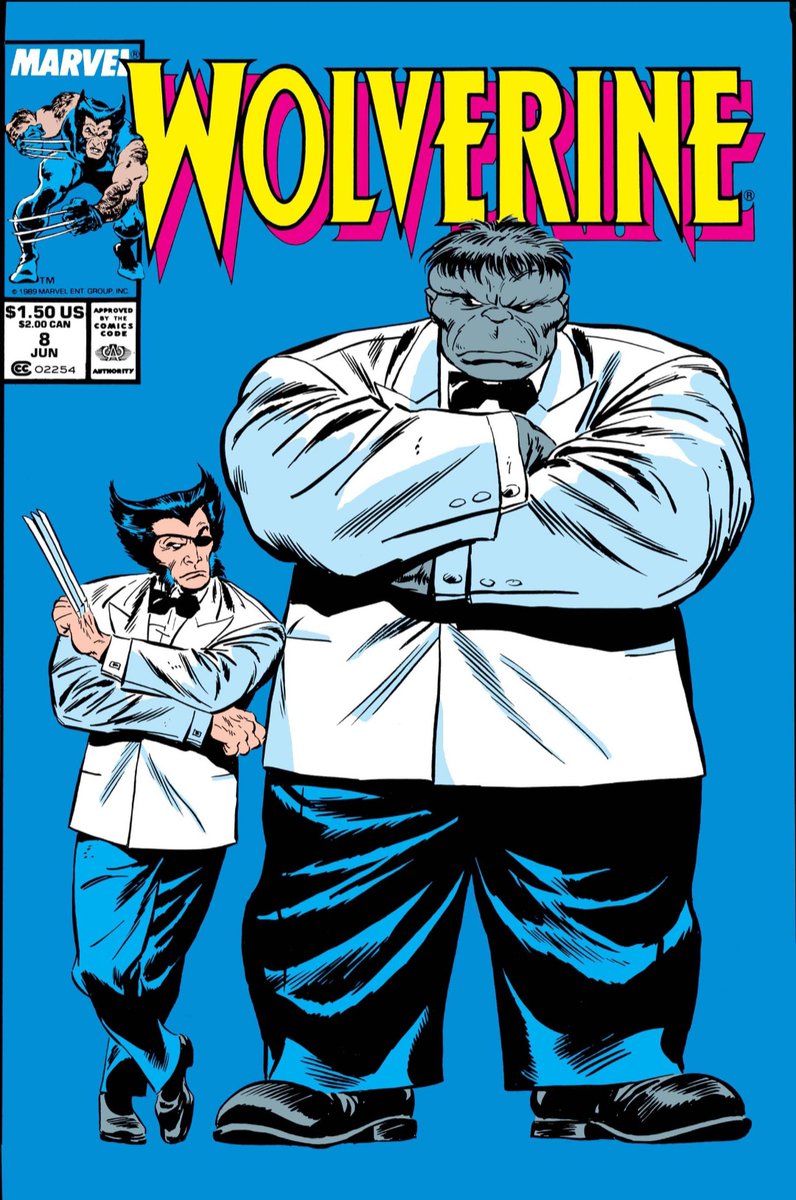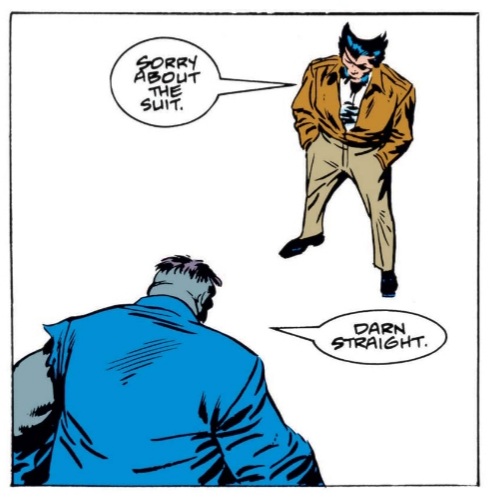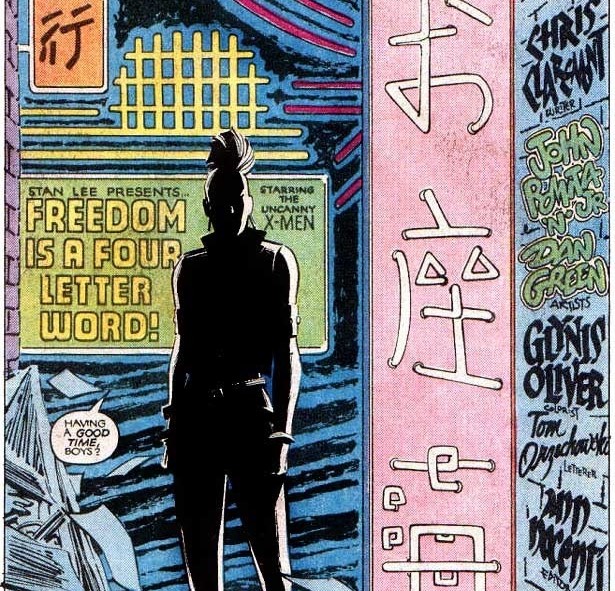Wolverine #8 may be amongst the strangest stories that Claremont has ever written - a bizarre, deeply comedic take on the longstanding rivalry between a pair of iconic Marvel superheroes that seems to exist entirely out of time, genre, and expectation. #xmen 1/7 

The basic premise is a chance encounter between Logan and Hulk. Hulk (somehow) doesn’t recognize Logan in his Patch persona, but Logan knows Hulk all too well and trades on their pre-existing rivalry through a series of elaborate pranks (mostly pants-based). 2/7 

The most glaring strangeness of the story comes from the many anachronisms. The story is set in modern times, yet plays like very much like a comedic iteration of Casablanca, even featuring some references to the classic film. 3/7 

There’s also a lot of genre-blending, with a mix of superheroes, 20th C mobster movies (via Joe Fixit), and a healthy dose of slapstick comedy such as you might find in a vaudeville act. 4/7 

Jarringly, the tone of levity is blended into a narrative that features sex trafficking, murder, political corruption, and the drug trade. This too can read as anachronism, given a more modern sensibility and awareness (even in the late '80s). 5/7 

Lastly, the characterization of the two characters is a far cry from their epic first confrontation. These are entirely different people, which is a little refreshing, but also somewhat jarring, depending, of course, on one’s attachment to either. 6/7 

Outside of the dissonant elements, it’s interesting to see Claremont get to take a stab at comedy, at the Wolverine/Hulk feud, and at Peter David's Grey Hulk, and it’s definitely a very unique tale amongst all of Claremont’s Wolverine stories. 7/7 

• • •
Missing some Tweet in this thread? You can try to
force a refresh






















